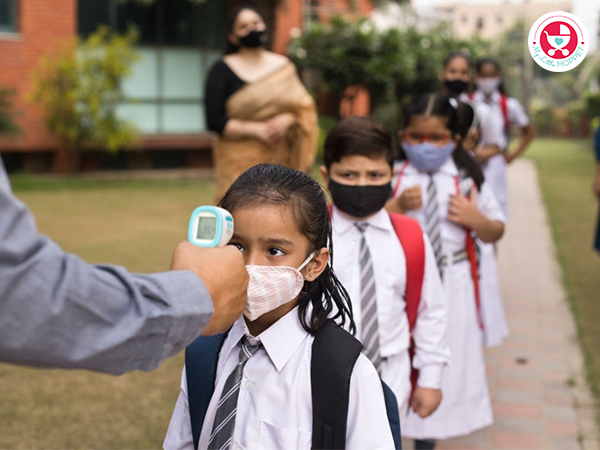Last week, India reached a great milestone having administered a total of 1 billion vaccine doses. The national tally of COVID-19 cases has also shown a steady decrease. Metrics and statistics all point to one thing – the situation seems to be improving.
The global COVID-19 pandemic has wreaked havoc everywhere and disrupted daily lives of billions of people. Students and children have suffered a lot because of it. They have missed out on an important part of their lives as schools closing down did not only hamper educational progress of children, but also their social progress. But this is about to change.
The Government of India, and various state governments have informed that in view of the improving situation, they have decided to open schools for physical classes. Although it is true that the situation has improved greatly, as a parent and a responsible adult, sending your children to school when the pandemic hasn’t completely gone away definitely creates discomfort.
And the fact that children below the ages of 18 aren’t yet eligible for a vaccine further make it difficult. We understand how you feel, and we have some tips to help you.
Let’s have a look at safety precautions you should teach your children to take:
1. Distancing yourself from others is still crucial. COVID-19 is still most likely to transmit from individual to individual, especially among those who come into close contact with each other. Remember that an infected person can be asymptomatic while still being infectious.
2. Wearing a mask can aid in controlling any potentially infectious respiratory droplets that are released while exhaling, speaking, or coughing, especially when social distance is difficult and the individual isn’t aware they’re infected.
3. Washing and sanitizing your hands reduces the danger of being ill from contacting a contaminated surface and then transmitting the virus to your eyes, nose, or mouth when you touch your face.
You’re aware of COVID-19‘s early warning signs, and also what to do if you suspect your child is sick. Furthermore, you’ve probably spent the entire pandemic telling your children about the daily steps they must take to avoid becoming ill.
But, despite your best attempts, you’ve probably found your kids standing too near to other people, forgetting to clean and sanitise their hands after contacting public surfaces, and forgetting their masks in the car or at home
Here’s what you can do to ensure your kids follow the precautions
- Understanding that they are kids: The right way to begin with teaching your children about safety precautions is to remember that they are kids. Kids don’t always understand why they have to do something; it often results in confusion and misbelief.Sit down with your child/children and have a dialogue filled conversation with them. Try to make it not sound like a lecture, make the conversation more interactive, and encourage them to ask more questions. The more questions they ask, the closer they get to understanding why exactly they need to follow each precaution.
- Reinforcement & repetition: This one is a much older technique. All parents have explained the importance of practice and repetition to their children when it comes to education and homework. You can do that same with COVID-19 precautions.Now, as a parent, you have probably gone over these same guidelines and precautionary measures with your kids over and over again. But sometimes, just telling them to do something is not enough. Reinforcing their behavior when they follow safety measures can help. Ask them everyday if they remember all the precautions. If they forget, remind them again; make use of interesting learning aids if that helps.
- Ask them how they feel: As a parent, you are not only their guardian, but also their friend and a trustworthy source of information.
Try to be as approachable and ready as you can so that your child feels comfortable expressing any worries they might have about going back to school when the pandemic is not over yet. Being open is difficult for anyone, so if the subject does not really come up on its own, you may need to start the conversation.
If your child is worried about having to wear a mask every day or potential infections happening among their peers, make sure you’re listening carefully, empathising frequently, and reassuringly assisting your child in coping with his or her concerns.


 Download FREE Recipe Ebooks for Babies & Toddlers
Download FREE Recipe Ebooks for Babies & Toddlers




















Leave a Reply